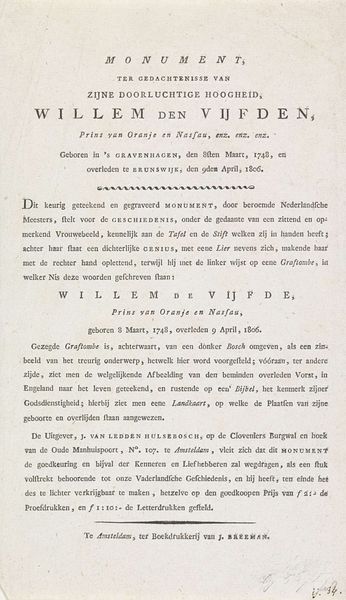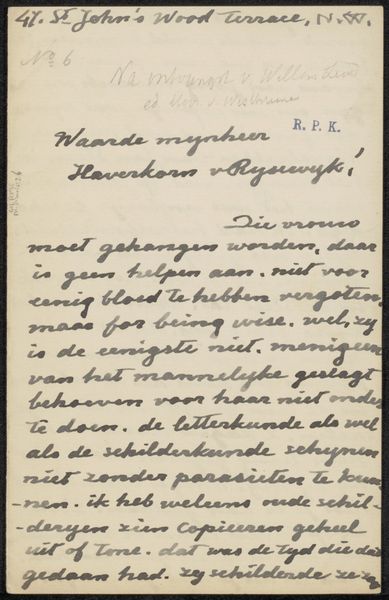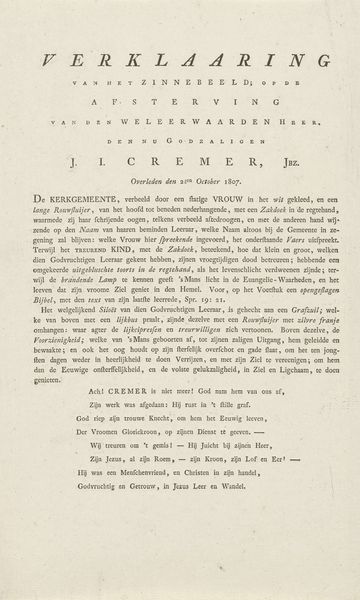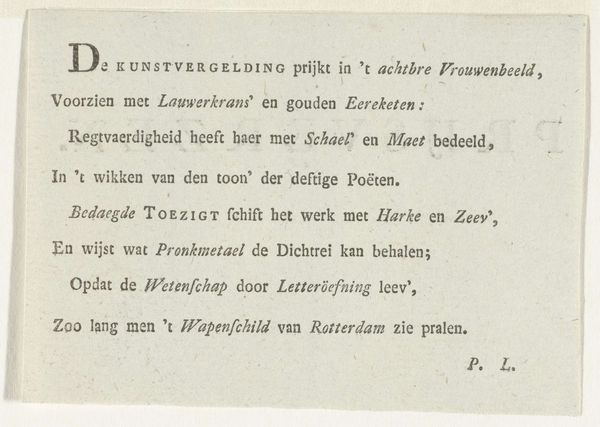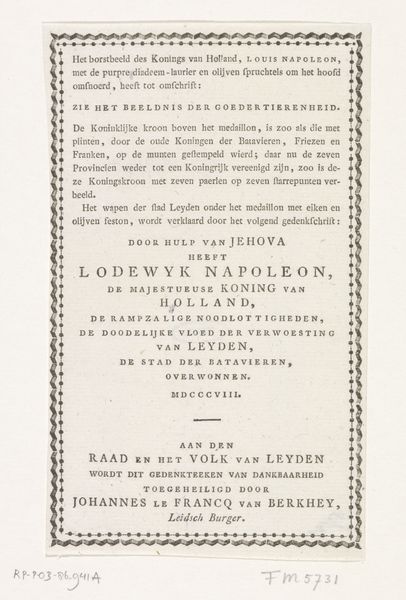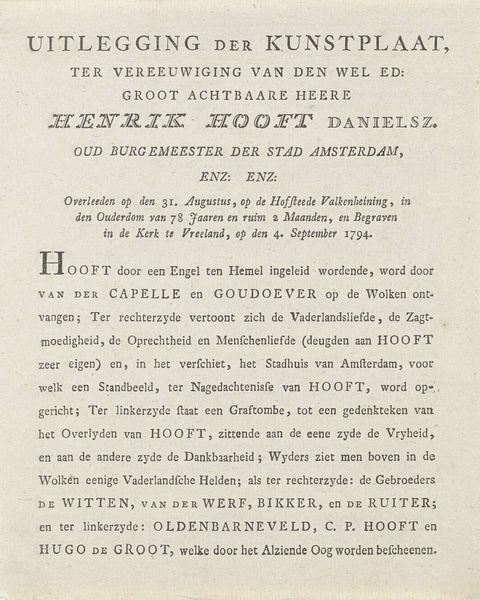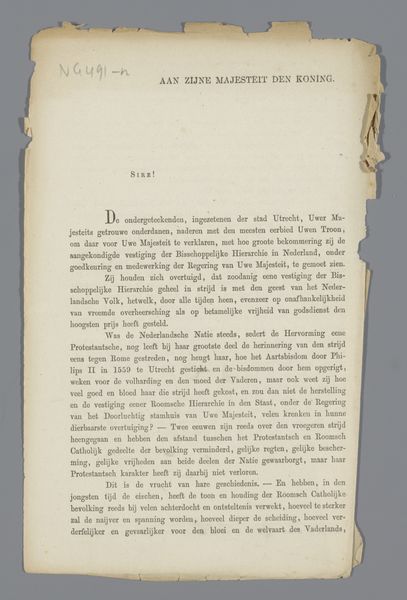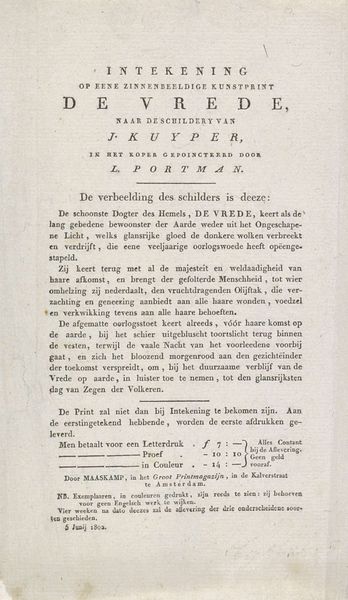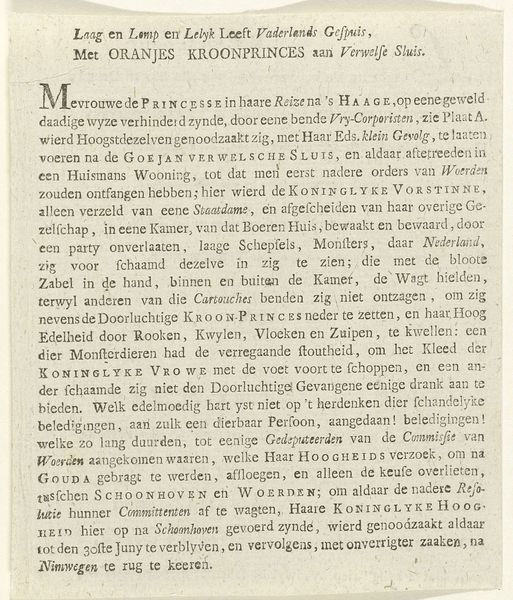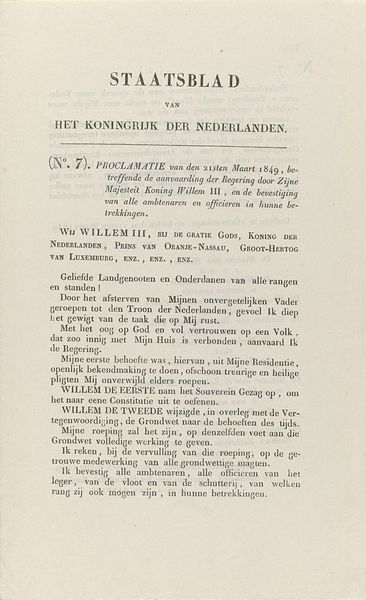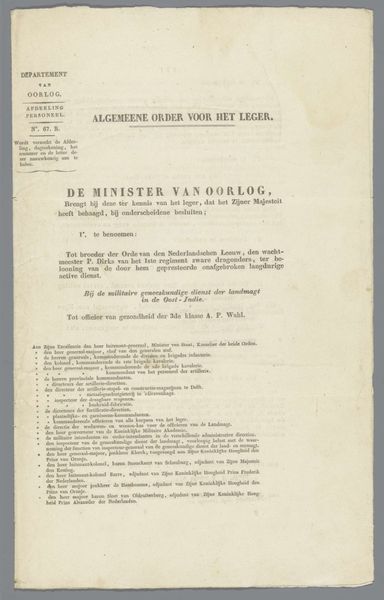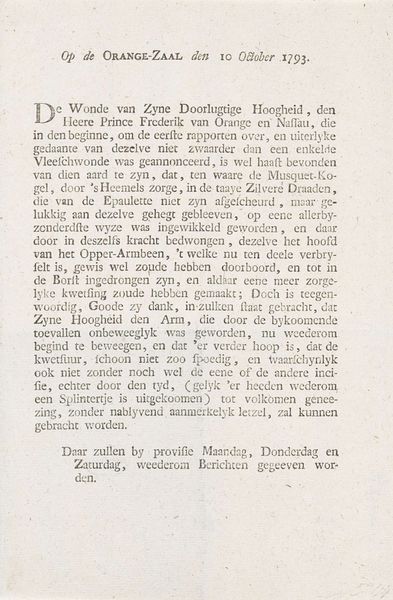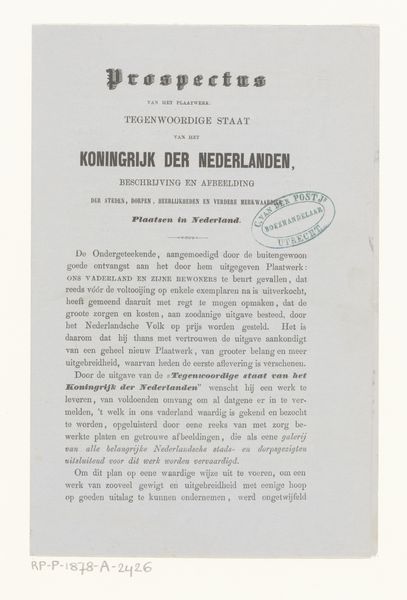
Staatsblad met de toestemming voor het huwelijk van prins Frederik, 1825 Possibly 1824
0:00
0:00
anonymous
Rijksmuseum
print, paper, typography
#
portrait
#
hand-lettering
# print
#
hand drawn type
#
paper
#
text
#
typography
Dimensions: height 230 mm, width 130 mm
Copyright: Rijks Museum: Open Domain
Curator: At the Rijksmuseum, we’re looking at a fascinating printed document: the “Staatsblad met de toestemming voor het huwelijk van prins Frederik, 1825”—or, the State Gazette with the Consent for the Marriage of Prince Frederik. It dates probably to 1824 and is printed on paper using typography. Editor: The severity of this typographical treatment immediately grabs my attention. The almost monotonous appearance evokes the bureaucratic process it documents. What’s intriguing about such formalized textual objects? Curator: The text itself unveils layers of power dynamics at play. It embodies not just consent but an active political orchestration, right? Marriage within the aristocracy wasn't simply a matter of personal inclination but was integral to geopolitical strategy. Here, we see Willem, by the grace of God, King of the Netherlands… Editor: The symbolic language is intense—'by the grace of God,' associating the royal family with divine approval, is an image in itself. The document serves as an official symbol, affirming dynastic ambitions and securing political alliances through the arrangement of marriage. This ties into established semiotics, echoing power consolidation. Curator: Indeed, and we see it manifest quite clearly in the way that Prince Frederik Karel of the Netherlands is presented, juxtaposed against the mention of Princess Louisa Augusta Wilhelmina Amelia, daughter of the King of Prussia. Marriage serves the “interests of the Nation,” as is plainly stated. The arrangement underscores political connections between the Netherlands and Prussia, reflecting complex alliances during the 19th century. Editor: The mention of “Nation” transforms a personal bond into a public event with profound political repercussions, right? Marriage symbolizes a merger of realms—the anticipation for alliance prosperity as embodied by two people uniting is loaded with meaning, acting like an emblem for a secure future. Curator: It becomes quite clear that this legal consent is meant to portray that union as sanctified and divinely favored to garner popular acceptance. Editor: I’m struck by how an otherwise mundane document has so much layered imagery regarding identity, political maneuverings, and power structures embedded within its lines. Curator: For me, this piece underscores the historical relationship between personal lives and State matters, demonstrating how consent – then, and maybe even now – remains politically inflected and regulated, and it's something that lingers through the centuries.
Comments
No comments
Be the first to comment and join the conversation on the ultimate creative platform.
